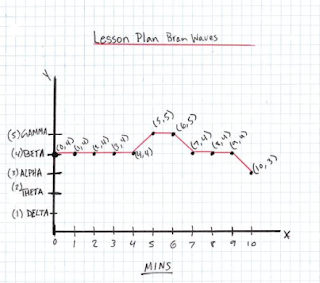Alzheimer's Disease:
Alzheimer’s, also known as Major Neurocognitive Disorder according to the DSM-V, is a “Neurocognitive disorders can affect memory, attention, learning, language, perception, and social cognition,” as stated in the DSM-V. In other words, Alzheimer’s disease is a disease that slowly kills brain cells.This disorder may lead to memory loss, and gradually worsen with the disability to carry on a conversation. Alzheimer’s comes with different stages. Because of the death of brain cells, the brain begins to shrink. Along with that, we begin to see the hippocampus shrink. The hippocampus allows us to have long-term memory. Alzheimer's disease can have a huge affect on your day to day life. Not only for yourself, but the significant others in your life. Richard Taylor, an American Academic who wrote about his life with Alzheimer's stated, "One day I will no longer know how to express love. Bit by bit, everything that connects us will disappear, and I suspect that I won't even miss it." According to the DSM-V, you must experience at least three symptoms that is listed in the criteria in order to be diagnosed with a mental disorder. Most people that are diagnosed with Alzheimer’s/Dementia experience:
1. Complex attention: For example, a person diagnosed with Alzheimer’s is dependent on a caretaker to help them with their daily routine like using the restroom, remembering to pay bills, etc.
2. Learning and memory: The patient may experience memory loss such as forgetting a person who is usually in their everyday life or forgetting their own address. This is caused by the hippocampus slowly destroying itself.
3. Deficiency in perceptual motor skills: Not knowing how to walk, holding a cup, etc. Tasks that you were able to complete in your everyday life are slowly getting harder to accomplish.
 |
| Alzheimer Patient Brain (2019) NB |
Brain + Brainwaves
Almost all Alzheimer’s patients brains are affected in the entorhinal cortex and hippocampus region in the brain. The brain waves that are active in the life of a person with Alzheimer’s are difficult to record. They are constantly fluctuating and go off the charts. Although these brain waves vary, neurologists are using Gamma wave therapy to revive some parts of the brain that may not currently be working for patients. Here is a visual representation in parts of the brain that are affected by Alzheimer’s.
Lesson Plan + Brainwave Function
 |
| Lesson Plan (2019) NB |
Graph & Piecewise Function
This graph shows how my peers brains functioned, and which brain waves were active throughout my simulation. |
| Brainwave Graph (2019) NB |
 |
| Piecewise function (2019) NB |
Video of Simulation:
This simulation shows the recorded experience that my peers went through. This is my lesson plan finally coming to life. The video has some explanation, and different time's when my classmate's experience specific moments.
Alzheimer Simulation (2019) NB
Alzheimer Awareness Flier:
 |
| Alzheimer Awareness (2019) NB |
Conclusion:
To conclude, I thought this AP was interesting to look into. I never found a true interest in neurology until now. I never really understood how much an impact our bodies and lives could have when our brains don't function the right way. I learned that Alzheimer's is a disease that needs more awareness. A cure for Alzheimer's disease is already being looked into deeper and it is my understanding that it's being into by the study of Gamma waves. Brainwave therapy can regenerate parts of the brain that are affected and inoperative due to Alzheimer's/Dementia.
1. “Major Neurocognitive Disorder.” Major Neurocognitive Disorder – Knowledge for Medical Students and Physicians, www.amboss.com/us/knowledge/Major_neurocognitive_disorder#xid=v30A4f&anker=Zc052cec87a4296e043ba6fcd94d588f1.
2. National Institutes of Health, 13 October 2011,
https://commons.wikimedia.org/wiki/File:Alzheimers_brain.jpg
3. Heerema, Esther. “How Music Therapy Can Benefit Alzheimer's Disease Patients.” Verywell Health, www.verywellhealth.com/using-music-in-alzheimers-disease-97624.
4. Lakotta, Beate. “Interview with Alzheimer Sufferer: 'You Turn Into a Person You Don't Know Anymore' - SPIEGEL ONLINE - International.” SPIEGEL ONLINE, SPIEGEL ONLINE, 28 Feb. 2010, www.spiegel.de/international/zeitgeist/interview-with-alzheimer-sufferer-you-turn-into-a-person-you-don-t-know-anymore-a-688049.html.
Works Cited:
1. “Major Neurocognitive Disorder.” Major Neurocognitive Disorder – Knowledge for Medical Students and Physicians, www.amboss.com/us/knowledge/Major_neurocognitive_disorder#xid=v30A4f&anker=Zc052cec87a4296e043ba6fcd94d588f1.
2. National Institutes of Health, 13 October 2011,
https://commons.wikimedia.org/wiki/File:Alzheimers_brain.jpg
3. Heerema, Esther. “How Music Therapy Can Benefit Alzheimer's Disease Patients.” Verywell Health, www.verywellhealth.com/using-music-in-alzheimers-disease-97624.
4. Lakotta, Beate. “Interview with Alzheimer Sufferer: 'You Turn Into a Person You Don't Know Anymore' - SPIEGEL ONLINE - International.” SPIEGEL ONLINE, SPIEGEL ONLINE, 28 Feb. 2010, www.spiegel.de/international/zeitgeist/interview-with-alzheimer-sufferer-you-turn-into-a-person-you-don-t-know-anymore-a-688049.html.



No comments:
Post a Comment